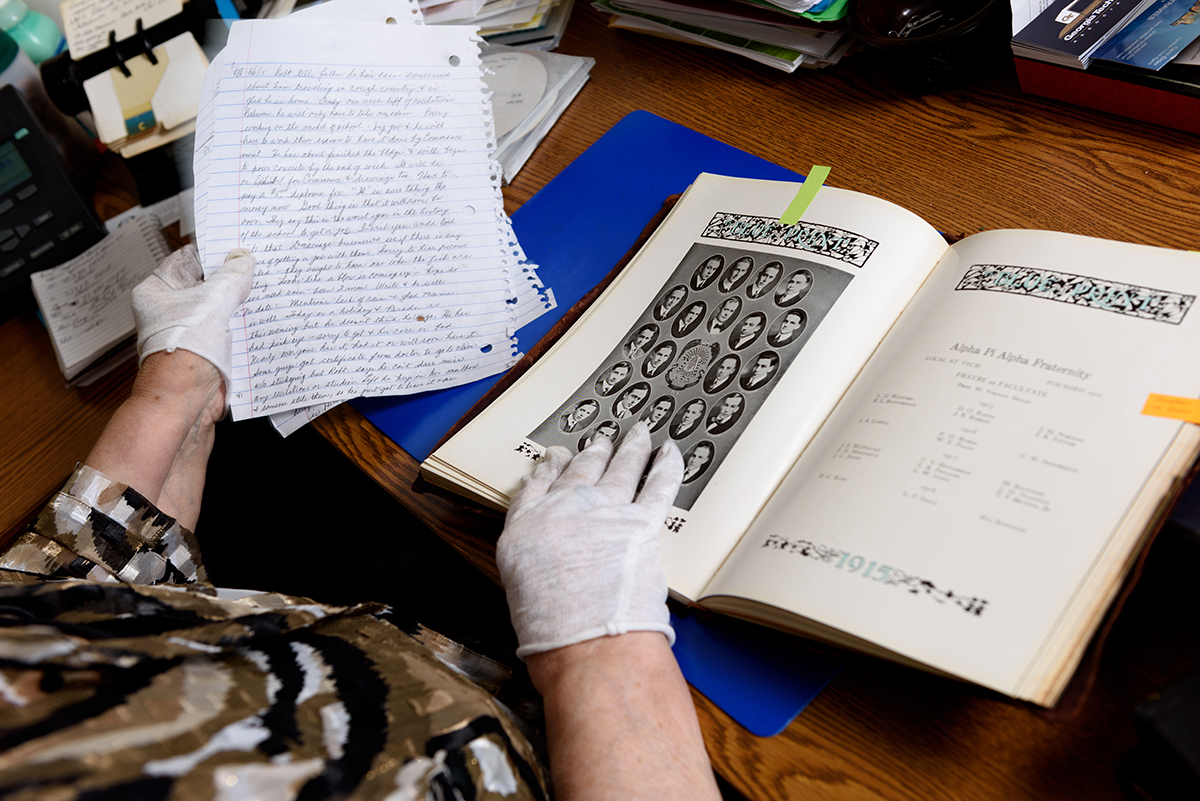Living History Program Celebrates 1,000th Interview

Marilyn Somers reviews her notes taken from vintage letters and the 1915 Blueprint, wearing gloves to protect the delicate documents she peruses on a regular basis.
Georgia Tech’s most famous student – George P. Burdell – has achieved yet another accolade after being asked to record his story for Georgia Tech’s Living History Program.
In fact, Burdell’s interview is No. 1,000, marking a major milestone for the program, which began recording the oral histories of alumni, staff, and friends of the Institute 20 years ago.
Living History Director Marilyn Somers says selecting Burdell for the program’s 1,000th interview was an easy choice.
“When one considers who is the most famous alumnus, hands down the vote goes to George P. Burdell,” Somers says. “He’s the most learned and constant influence we have at Georgia Tech.”
In addition to his recent interview, Burdell also has another important tie to the Living History Program. In 2010, Somers established a fund in his name to help keep the program alive for future generations.
Recently, an anonymous donor contributed $100,000 to the George P. Burdell Living History Endowment Fund that will help Living History collect the next 1,000 stories about Georgia Tech.
The Living History Program was established in 1994 when Somers, then serving as director of communications for the Georgia Tech Alumni Association, received a call from a nursing home asking for a recording of the Ramblin’ Wreck fight song to play at the 100th birthday party of an alumnus.
“I thought, I bet that guy has a cool story to tell,” Somers says.
Soon, Somers realized she wanted to find a way to interview aging alumni about their experiences and memories of Georgia Tech before it was too late.
Duke Mewborn, then a member of the Alumni Association’s Board of Trustees and president of Baker Audio, caught wind of the idea and liked it so much he donated recording equipment to kick off the project.
With just two full-time employees and the help of student interns, the Living History program keeps a brisk pace, conducting an average of 40 interviews a year around the country. On top of that, they create special commemorative videos for each class reunion and create historical documentaries about Tech figures and traditions such as legendary coach John Heisman and the Ramblin’ Wreck.
“[Georgia Tech is] such an important institution, and everything about it should be documented. Everything about it should be known,” Somers says.
Read more about the 1,000th interview.
Watch excerpts from four special interviews selected by Somers from the collection of 1,000.